Backspin Batting Tee Placement Tips: How High Or Tall And Drills To Teach Hitting Power For Baseball & Softball Swing
Learn Backspin Batting Tee placement tips on how high or tall to make the tee. Discover how to do drills off the tee to teach hitting power for the baseball and softball swing.
Backspin Tee: Batting Tee Location Setup
Answered: “I have a question about contact points for hitting inside/outside pitches. What’s your opinion on how you should set up your batting tee for working both of these locations?”
Here’s what we discuss in this Backspin Tee batting tee video above:
- How to set up inside tee
- How to set up middle tee
- How to set up outside tee
- Using art of variance to train off tee
- Backspin tee v. regular tee swing experiment
Hey. What’s going on? It’s Joey Myers from ‘Hitting performance lab’. In this batting tee video, we’re gonna answer another reader question:
“I have a question about contact points for hitting inside versus outside pitches. What’s your opinion on how you should set up your Tee for working both of these locations?”
This is a great question, and this is what I got in from email. I thought, I have gotten it quite a few times, it’d be nice to just put in a post, and that when people ask, I can just send that out to them instead of having to explain it.
So, here’s the general batting tee rule in setting up Tee for the pitch depth, whether it’s inside, middle, or away. Now, I know this requires some visuals. I will take a picture (image to the right), and during this video, I will put it up, so that you can see that image while I’m actually talking you through it. Because I realized that it would be kind of tough to do that in this video setting without actually being out on the field…
SCIENCE-BASED TRAINING:
Improve your hitting strategy dramatically by applying human movement principles.
Learn not only how and what to train but also the science behind the methods.
How To Set Up Inside Batting Tee
So, on the inner third of the plate, realize that when you set the Tee up you want to be on the inside inner third of the plate.
The other thing that you want to make sure you’re doing is ‘at stride’ landing. So, all these positions are at stride landing, okay. It’s not at the start of the swing. So, you have to get your hitter at the stride landing, and then you can kind of figure out how far up, middle, or deep you want to put the Tee. On the inner third of the plate, ball is on the inner third, you want the ball to be set up whether using a BackSpin Tee or Tanner Tee or whatever Tee. You want it to be set up about six inches to a foot out in front of the stride foot, okay.
Again, lined up on the inner third of the plate. But in relation to where the foot is, you want it to be about 6 inches to 12 inches. Perry Husband actually says when we’re using the front arm shape, we’re locking that front arm out, for some players could be as much as 18 inches. So, it’s going to depend on the age of the hitter. Obviously, if there’s 7 years old you’re not going to put the ball, if you’re working in or third, you’re not gonna put the ball 18 inches out in front of them.
But maybe a high school or college or pro guy or gal, you want to basically use your common sense to where you need to put that, in relation to setting up batting tee locations. It might take a few swings for you to finally find that sweet spot. Because it all depends on the length, and seven-year-olds arms are definitely not as long as a 22 year old’s arm. So, in the inner third, about 6 to 18 inches out in front, of the stride landing foot.
How To Set Up Middle Tee
Middle third of the plate, you’re gonna be somewhere around the stride landing foot, in line with it to about 6 inches give or take, 3 to 6 inches, 3 to 8 or so, give or take.
But somewhere at middle should be around stride foot landing, or in line of the stride foot over the middle third of the plate.
How To Set Up Outer Batting Tee
Now, the outer third part of the plate you want to set it up on the outer third, and it’s gonna be deeper off the stride foot. So, it’s gonna be farther back, closer to the catcher. So, you want to make sure that that’s gonna be a range. I know, you probably don’t like ranges, it would be nice for me to just say we’ll do it 6 inches from.
But it’s all going to depend on your hitter, the younger the hitter, the less the discrepancy between staggering these balls, the less distance between the contact points. Because the arm, the front arm shape or length isn’t as long as a 22-year old. So, it’s gonna be the range between 6 and 12 inches I would say, or 3 and 12 inches, just again play around with it. But what should happen is when they hit it, when they hit it optimally, they should be on, if it’s on the outer third correctly, should be going to right center field. Inner third, it should be about left center.
Again, the farther out you move it, the more they’re going to pull it off those lines. So, you want to make sure that’s kind of a ballpark of where you want to put it. Think about it this way, this is what I tell my hitters. When we’re talking depth, hitting depth, whether opposite field middle or pulling the ball is think about like a pinball machine. Now, some hitters don’t know or never played on a pinball machine, you can show them. But think about the flappers on a pinball machine, if I had the left side flapper or right-handed, if they’re a right-handed hitter.
So, if I want to hit the ball across the table, opposite field. Then I’m gonna let that ball travel deeper and then my flapper is going to hit ball deeper. If I want to pull it across the table then that ball has to be more inside or coming more where the flapper is, and that flapper has to hit the ball more out in front in order to get it to go. Now obviously, it’s a little bit different when we’re talking about a hitter in a flesh-and-blood human being, but the bat is like the flapper, and the human body is just an extension to that.
That is how you set up the Tee.
Using Art of Variance To Train Off Tee
Now, a couple things that you want to do when you’re working and training off the Tee. Because there are some people out there anti Tee, they are “Never Tee’rs”, never batting Tees. Working on the Tee has its place, it shouldn’t be something that you do all the time. But if you’re gonna work on the Tee, make sure you use what I call the ‘Art of Variance’. So, you want to vary where the pitch height is, and the pitch depth. Whenever we’re on the Tee, we’re on the backspin Tee, or Tanner Tee. We have our hitters, after every swing, we move the Tee up or down.
Doesn’t have to be a lot, just a little bit. Just giving them a different height to it, then what we’ll do is say a five swing round, is the odd swings, the 1, the 3, and the 5 swings, or the first three swings will actually have them swing inside. We will have the Tee set up on the inner third, and we’re moving the ball up and down. Then the last two swings, we’ll move it to the outer third, and we’ll move the swing up and down.
Then, the next round, the next round of five, we will reverse that. So, the first three swings are on the outer third moving it up and down. We’ll move it to the inner third, and then for the last two swings, and we’ll move that up and down.
So, you want to make sure that you’re varying the ball, whether it’s height or depth on the Tee when you’re working off the Tee. Because the pitcher is not going to be throwing it in the same spot every time. So, the Tee definitely has its limitations, it does not obviously simulate a moving pitch. But we can work on the Tee whether, it’s mechanics, we can work on it on getting hitters to understand pitch depth. Where you’re hitting the ball deeper, they hit at the other field, or pulling the ball, we can work on it using especially overload training is really good. We can set the Tee really high and inside, up and in. So, we can get them to work on some things with the overload bat, to get them not getting under the ball.
Backspin Tee v. Regular Tee Swing Experiment
So, there’s some cool stuff we can do with the Tee. Just make sure we are smarter with it, and the difference between a backspin Tee and a Tanner Tee or any of any other Tee. Because every other Tee is way different than the backspin Tee, there was an experiment I did. A swing experiment where I hit, I took a hundred swings off a backspin Tee, and a hundred swings off a regular Tee. I split those hundred swings up, I mixed them. So, I had say A, B were split in 25 swing chunks. So, I would say A, where backspin Tee swings. I would go A, B, B, A and then the last round of 100. I would go B, A, A, B.
‘A’ represented backspin Tee swings; the ‘B’ represented regular Tee swings. I took identical pictures of the cage. Then plot it, when I take some swings out the backspin Tee where the ball would go, and then I would do the same on the Tanner T.
But what the difference was, off the backspin Tee, 100 swings looked like a tornado or a tree. The swings off the regular Tee kind of looked blockish. There were some up above the top of the Tee or a top of the gate, but it was more block-ish. What was interesting is the “backspin Tee effect” is what I call it, after changing from a backspin Tee swing to a regular Tee swing. The backspin Tee effect where I was still driving the ball up, lasted for about 10 swings or so. Then, the last 15 of the 25 swings on the regular Tee, I’d noticed that the ball would start to kind of drag down. Then, when I go back to the backspin Tee, would go back up again. It was just an interesting backspin Tee effect.
So, in this video, we answer reader your question:
“I have a question about contact points for hitting inside versus outside pitches. What’s your opinion on how you should set up your Tee for working both of these locations?”
I hope this video answered that question…make sure we’re swinging smarter by moving better. And before I let you go…
- Fix Your Child’s Fear of the Ball Fast: Proven Hitting Drills to Stop Flinching at Pitches—Trusted by Top Youth Baseball Coaches - July 12, 2025
- Fix Your Little Leaguer’s Hitting Slump Fast – Proven Confidence Drills & Mental Reset Tools (Used by Top Youth Baseball Coaches) - July 9, 2025
- Best Hitting Drills for 8-Year-Olds (2025): Fix Swing Flaws Fast with This MLB-Trusted Youth Baseball System—At-Home, Step-by-Step, and Built for Game-Day Confidence - July 5, 2025



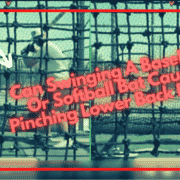

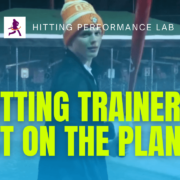

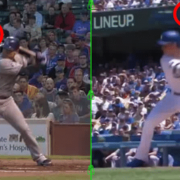
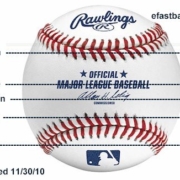

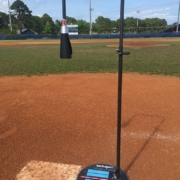



Leave a Reply
Want to join the discussion?Feel free to contribute!